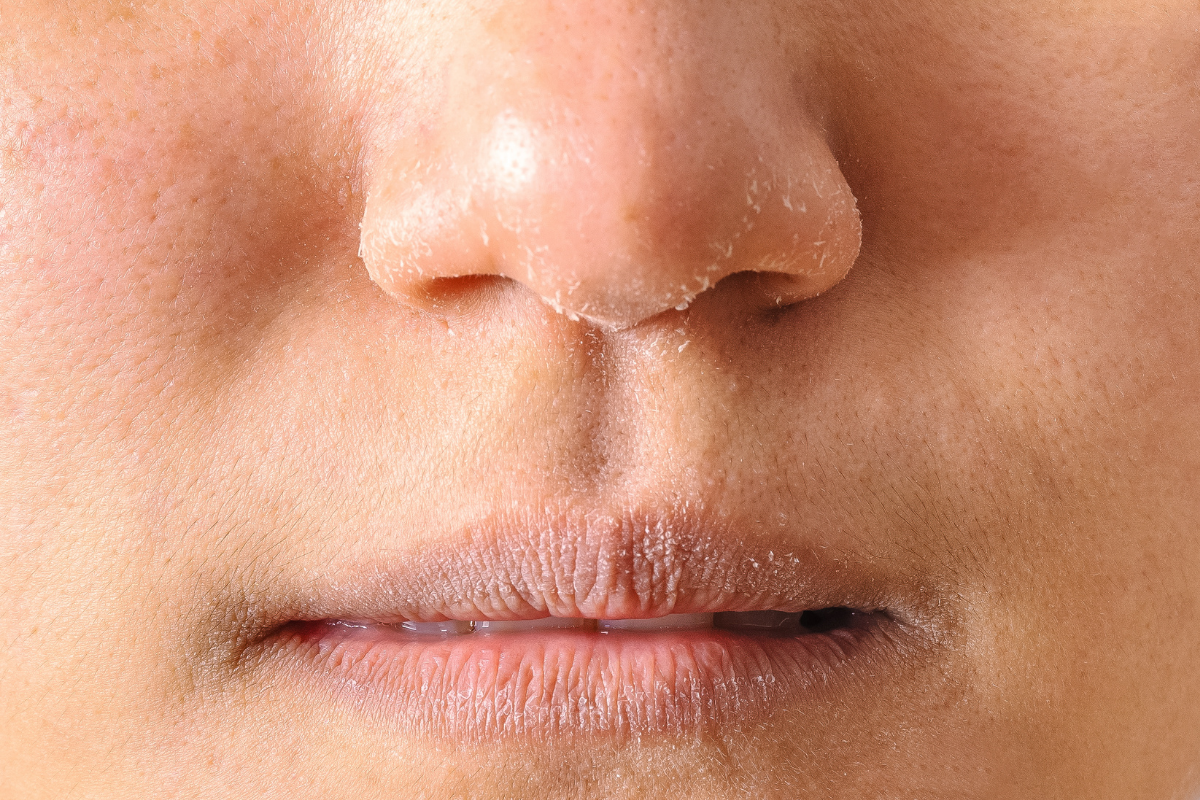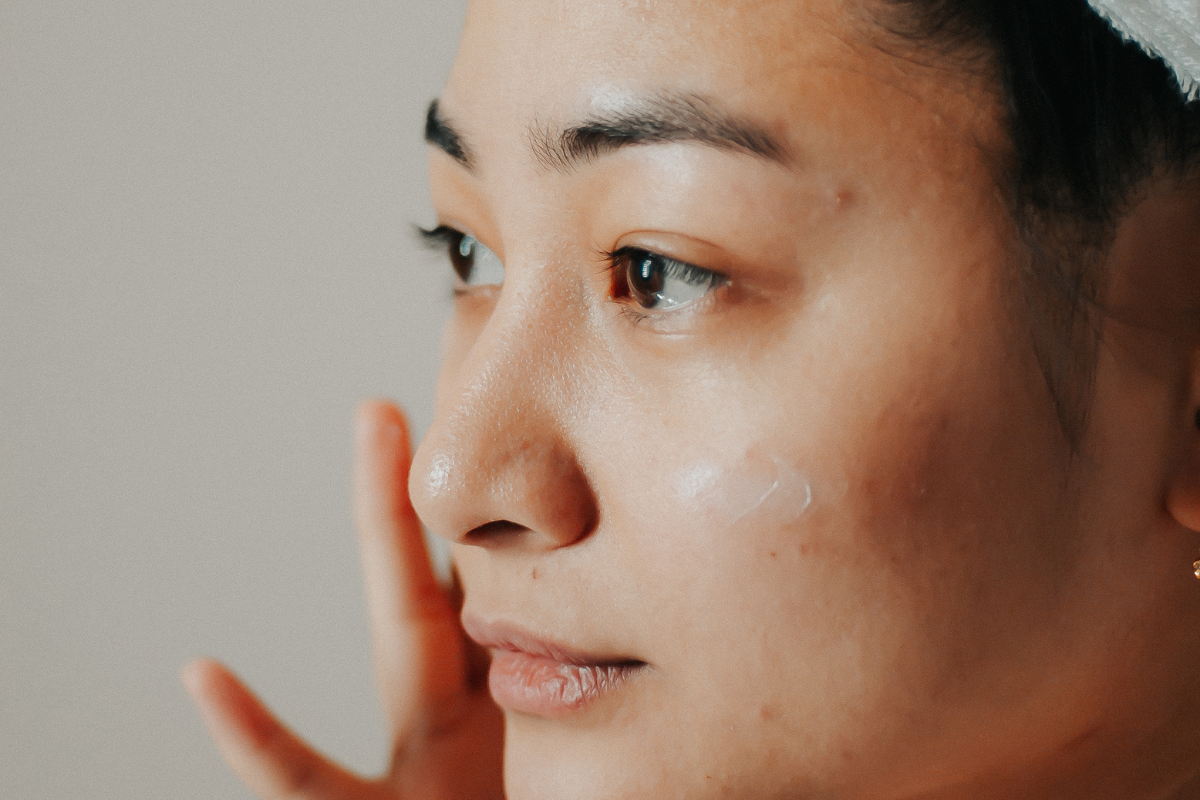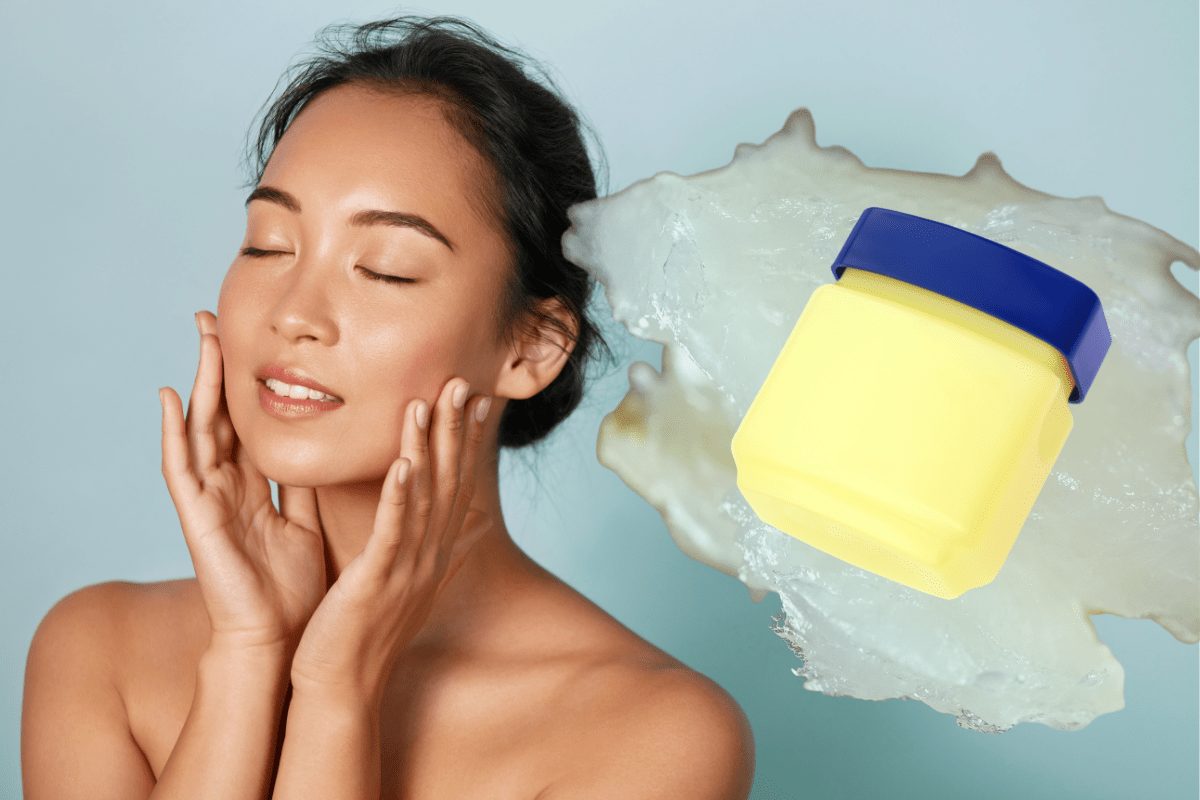No products in the cart.
- January 3, 2022
- Dry
- By Aqalili Azizan
Getting to Know My Skin: Dry Skin 101
Don't have enough moisture? Find out what dry skin needs.
Table of Contents

Does your skin feel rough like sandpaper? Tight like someone’s pulling on it? Do you see skin flaking off when you rub your finger over your face?
These are all signs of dry skin.
So, instead of blotting paper, now you need to bring along moisturiser no matter where you go.
Fret not. If you have a dry skin type, this complete guide will help you with that problem!
What is Dry Skin?
If oily skin produces extra sebum, dry skin is the exact opposite. Dry skin doesn’t have enough water and naturally occurring oils to keep your skin soft, supple and stretchy.
Regardless of gender, dry skin becomes more common as you age as your skin naturally reduces its production of skin oils and lubricants.
A person with dry skin may also have sensitive skin because the skin loses the protective moisture and fat that keeps the skin from drying out. Therefore, this condition can usually be seen if you have a dry skin type.
Besides your face, dry skin also can occur on arms, hands and notably lower legs, where you may have rough-feeling patches that flake off.
But, how can I know if I have this particular skin type?
How Can I Identify Dry Skin?
It’s straightforward to determine your skin type, and you can refer to our previous article here. If you tick off most of this checklist below, you have dry skin!
✅ Skin feels tight and rough.
✅ Itchiness may occur.
✅ Barely visible pores.
✅ Fine lines and wrinkles are easily visible.
✅ Flaky, peeling, scaly with a rough texture, and you can feel skin flaking off when you rub your finger over it.
✅ Skin that stings or burns when touched.
✅ The complexion looks dull and too matte.
Related: Skincare School: How to Start a Skincare Routine
@ssharanka Bad Skin blaaahh #makeup#badskin#skincare#dry#closeup#sun#macro ♬ save up – VÉRITÉ
Why Do I Have Dry Skin?
- Age:
As you age, your pores naturally produce less oil, making you develop dry skin.
- Cold weather:
Dry skin is more common in areas with cold climates because of low humidity, where moisture in the air is lower. The water content of the outermost layer of skin (epidermis) tends to reflect the level of humidity around it.
- Health conditions:
Some common health conditions are dehydration and eczema.
Dehydration is self-explanatory. Water is essential for the body to do its fundamental processes and functions, and that includes our skin. So, make sure to drink your 8 cups a day!
Eczema is a skin condition where your skin feels itchy, inflamed and dry and can develop rashes. Since eczema has various types, this symptom can be atopic dermatitis, nummular eczema, contact dermatitis, dyshidrotic eczema, seborrheic, and stasis dermatitis.
- Too many hot showers:
If you’re a fan of a hot shower, you might want to limit yourself and expose yourself to a five to 10-minute shower daily. If you spend more than that, you may strip away most of your skin’s natural oils, and that can cause you to lose moisture.
- Medications:
Certain medications such as diuretics, laxatives, antihistamines and blood pressure medication can cause you to experience dry skin because they can affect the balance of fluids in the body.
How Do I Take Care of Dry Skin?
There is a way out of every situation, and if you have dry skin, the key is to incorporate as much hydrating and moisturising ingredients in every step of your skincare routine.
So, make sure to keep this skincare routine for dry skin below in mind:
Step 1: Cleanse with a hydrating cleanser
A cleanser is a powerful tool when dealing with dry skin since it’s the first skincare step. Look out for cleansers that are low pH, and avoid foam cleansers that tend to have alcohols that can dry skin up even more. Instead, look for cream, gel or balm textures.
Do not overwash! Cleanse at most two times a day (more would strip the skin too much of its natural oils) and use lukewarm or room temperature water.
Related: Skincare School: How to Use a Facial Cleanser.
Step 2: Use an alcohol-free toner
Dry skin types should avoid using harsh, alcohol-based toners as they can irritate and even worsen dry skin by stripping off the skin’s natural oils. Instead, look for a toner that includes soothing and hydrating ingredients to restore your skin’s pH levels.
Related: Skincare School: How to Use Face Toner.
Step 3: A serum that targets hydration
Serums are a great way to increase your moisture game since skin hydration isn’t all about chugging water. Serums formulas are packed with a high concentration of active ingredients to penetrate the skin’s deeper layers and infuse hydration.
In particular, look out for serums that contain hyaluronic acid, which attracts moisture from the atmosphere and infuse it into the skin.
Related: Skincare School: How to Apply Face Serums.
Step 4: Lock hydration in with a moisturiser
Moisturiser is your best friend here. A good moisturiser with the most advanced moisture grabbing ingredients will lock all the benefits of a serum and soothe the skin. Look out for more decadent cream or lotion that will give you that “boink boink” skin. Oil-based creams and moisturisers tend to be richer and more moisturising, and are perfect for reinfusing dry skin’s lack of natural oil.
Related: Skincare School: How to Apply Facial Moisturiser.
Step 5: Protect your dry skin with a sunscreen
We always remind you to protect your skin from UVA (ageing) and UVB (burning) rays, no matter your skin type. For dry skin, it’s pretty direct to choose a sunscreen with hydrating ingredients. Don’t go for a matte finish. Instead, a lighter gel formulation will keep you moisturised throughout the day.
Physical sunscreens may be a good choice here, as their rich and heavy texture can compensate for the lack of moisture in dry skin.
Related: Skincare School: How to Apply Face Sunscreen.
Play Safe with These Ingredients
You have seen hydration and moisturise words all over this page, so that’s what dry skin needs to keep your skin from cracking and scaly
From cleanser to sunscreen, hydrating ingredients must be seen in the products’ labels for dry skin to get plumper. Therefore, look out for these ingredients for dry skin!
- Hyaluronic Acid: Popular ingredient for dry skin is Hyaluronic Acid (HA), which can hydrate the skin, so it appears plump. Since it’s a humectant, it draws moisture from its surroundings to deliver it to the cells.
- Glycerine: Glycerine is an excellent moisturiser for dry skin and can help maintain the pH balance of your skin. If you use products with glycerine regularly, it will minimise the water loss in your skin. It’s also anti-fungal, healing properties in treating skin conditions like eczema and psoriasis.
- Shea Butter: Shea butter is a plant lipid from African shea tree nuts and is rich in fatty acids, antioxidants and vitamins. It’s best incorporated in moisturiser with other ingredients, so it isn’t thick (natural form) and great for dry skin and can create softer, hydrated and plumper skin.
- Ceramides: Ceramides are fatty molecules located within the skin itself. They form part of the barrier to prevent transepidermal water loss. Adding ceramides to your skincare routine is a good choice as it makes skin supple and soft by locking the hydration within itself. It also reduces inflammation and irritation seen in eczema, flaking and peeling.
- Peptides: This ingredient works to rebuild and repair damaged cells, signal the skin to produce collagen, and slow the ageing process.
- Vitamin E: Available in cream form or as oil for topical use, Vitamin E helps seal up the cracks caused by dryness. So, it’s great for prevention and restoration.
- Squalane: The is an excellent option for dry and irritated skin as it can help calm redness and inflammation.

There you have it! When purchasing new products, you can consider these seven best skincare ingredients for dry skin. Start treating your skin the right way, and make sure to have fun in the process of finding the right one.
Are you still confused about your skin type? Try the myeppo skin quiz for free! After five minutes with 14 questions, you can start to explore a skincare routine that suits your skin type.



